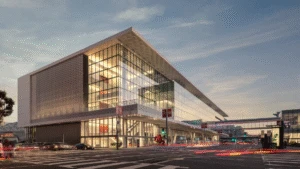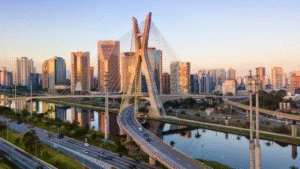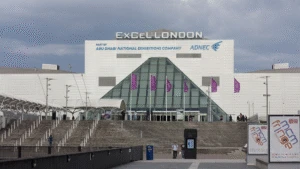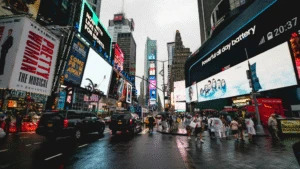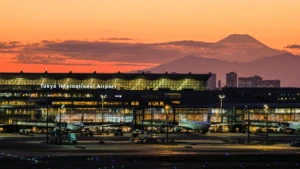Rome combines ancient history with modern business districts, creating a city where professionals close deals in centuries-old piazzas while tourists explore millennia of art. For both groups, Rome’s public transport offers an affordable and sustainable way to navigate the city. Whether you’re traveling between meetings, exploring after hours, or combining work with leisure, understanding Rome’s metro, buses, and trams will save time and reduce your environmental impact.
This guide explains how to navigate Rome’s transport network efficiently, avoid common mistakes, and make choices that balance productivity with sustainability. From ticket purchasing strategies to accommodation selection, each section provides practical information for eco-conscious business travelers.
How Rome’s Metro, Buses, and Trams Work Together
Rome’s public transport system, managed by ATAC, includes three metro lines (A, B, and C), six tram routes, and an extensive bus network. A single €1.50 ticket is valid for 100 minutes with unlimited transfers on buses and trams, and a single metro/train journey. Day passes offer 24, 48, or 72 hours of unrestricted travel across all services.
The metro operates from 5:30am to 11:30pm daily (extending to 1:30am on Fridays and Saturdays). Lines A (red) and B (blue) intersect at Termini Station, Rome’s main transport hub, while Line C (green) serves eastern suburbs with modern carriages. Metro C uses modern trains and stations but does not yet connect directly with A or B; passengers need bus or tram connections. The planned extension to Colosseo/Fori Imperiali remains under construction.
Most business districts and major attractions are within walking distance of metro stations, though some neighborhoods require bus or tram connections. Buses and trams cover areas the metro doesn’t reach but face traffic-related delays, especially during peak hours between 8–10am and 5–7pm. Regional trains extend service to destinations like Ostia Lido and provide airport connections through Fiumicino. The system increasingly accepts contactless payments through Tap & Go cards, with mobile ticketing expanding across the network.
Where and How to Purchase Your Tickets
You can buy public transport tickets in several convenient ways throughout Rome. Ticket vending machines in all metro stations and main bus terminals offer English language interfaces and accept euro bills and coins. Some newer orange machines also accept credit and debit cards, though many older machines still operate cash-only.
Keep smaller bills handy—most machines only give €6 maximum in change and some won’t accept bills larger than €10. If a machine displays “fuori servizio” or “guasto,” it’s out of order, which happens frequently.
Tabacchi (tobacco shops marked with a “T” sign) and newsstands throughout the city sell tickets at the same official prices. Simply ask the cashier for “un biglietto” (one ticket) or specify how many you need. These shops often have English-speaking staff in tourist areas.
The increasingly popular Tap & Go system lets you use contactless credit cards, debit cards, or mobile payment apps like Apple Pay and Google Pay directly at metro turnstiles. This automatically charges €1.50 and provides the same 100-minute validity as paper tickets. Each passenger needs their own card or device—sharing isn’t allowed. The system is expanding to buses and trams, though coverage varies by route. Remember to tap your card each time you change transport modes within the validity period.
Bus drivers don’t sell tickets, so purchase them before boarding. Always validate paper tickets by stamping them in yellow machines before entering the metro or immediately upon boarding buses and trams. Fare inspectors check frequently with fines ranging from €54.90 to €104.90.
What You Need to Know Before Your First Trip
Download ATAC’s official app or reliable alternatives like Moovit before arriving in Rome. These apps provide real-time schedules, disruption alerts, and route planning. They’re particularly useful when meetings run late or strikes affect service—transport unions announce disruptions in advance, but apps provide immediate updates on alternatives.
Key stations for business travelers include Termini (main hub), Spagna (Via Veneto offices), Barberini (government buildings), and Colosseo (historic center meetings). The EUR district, home to many corporate headquarters, connects via Metro B with direct service from central Rome.
Mobile data is essential for navigation apps, so secure reliable coverage through local SIM cards (even if you have an international plan from your home provider). Having offline maps as backup helps in areas with poor cellular coverage.
For business meetings and cultural sites, Tram 8 connects key areas between Trastevere, Piazza Venezia, and Largo Argentina while avoiding metro transfers. This route provides comfortable, frequent service through central Rome, making it ideal for accessing creative meetings or business lunches in historic neighborhoods.
When a Transport Pass Actually Saves You Money
Transport pass value depends on your usage pattern. If you’ll take three or more trips daily, a 24-hour pass (€7) costs less than individual tickets, while weekly passes (CIS, €24) benefit extended stays. Light users save money with single tickets, especially when walking through Rome’s compact central neighborhoods.
The Roma Pass (€36.50 for 48 hours, €58.50 for 72 hours) includes unlimited transport plus museum access, but rarely benefits business travelers focused on meetings rather than sightseeing. Airport transfers require separate tickets regardless of city pass ownership, as express trains and buses operate under different fare structures.
Purchase tickets through official channels—station machines, ATAC app, or authorized sellers—to avoid inflated prices from unofficial vendors. Passes activate from first validation, not purchase time, allowing flexibility in travel planning.
Getting From Rome’s Airports to Your Hotel
Fiumicino Airport (FCO) offers direct connections through the Leonardo Express—32 minutes nonstop to Termini Station, departing every 15–30 minutes for €17.90. This service connects directly to metro lines A and B, making it efficient for business travelers with tight schedules.
The FL1 regional train costs €8 with stops at Trastevere, Ostiense, and Tiburtina before reaching Termini. While slower, this regional service requires separate tickets from Fiumicino until within the Rome urban zone—no transport passes cover this airport connection. Airport buses from Terravision, Sit, and Cotral cost less but take longer and are less predictable than trains.
Ciampino Airport (CIA) connects primarily through buses, with Sit and Atral services reaching Termini in approximately 40 minutes for €6. These transfers connect to all metro lines at Termini. Taxis cost around €35 but make sense for late arrivals when bus frequency decreases or when carrying heavy luggage.
Five Mistakes That Will Ruin Your Rome Transport Experience
Beyond ticket validation, timing creates frequent problems for visitors. Buses face significant delays during peak hours and in the historic center, where narrow streets create traffic jams. Allow 15–20 minutes extra for important appointments when relying on buses, particularly during morning and evening rush periods.
Strike schedules can disrupt entire travel plans, typically lasting 4–8 hours and potentially affecting specific lines or entire systems. Check ATAC’s website the evening before travel days, as unions announce these actions in advance but timing can shift based on ongoing negotiations.
Late-night travel requires special planning. While metro service extends to 1:30am on weekends, most buses reduce frequency after 10pm. Night buses (lines prefixed N) run hourly on select routes, covering main corridors but with less coverage than daytime service. Plan return journeys accordingly or budget for taxi alternatives when business events run late.
Running out of smaller bills or coins can leave you stranded at ticket machines that don’t accept credit cards or large denominations. Keep €5 and €10 notes handy, especially when relying on older machines.Dyme-SiteMap-June-8-2025.xlsx
Forgetting that contactless payment only works once per card creates problems for groups. Each person needs their own payment method when using Tap & Go—you can’t tap multiple times with the same card.

Why Public Transport Helps Rome’s Environment
Public transport significantly reduces carbon emissions compared to private vehicles, supporting Rome’s environmental initiatives while preserving UNESCO World Heritage sites from excessive traffic. The metro and trams operate on electricity, while city buses gradually convert to sustainable fuels as part of municipal modernization efforts.
Walking often proves fastest for short distances, especially in Rome’s historic center where vehicle access is restricted. Neighborhoods like Centro Storico, Monti, Trastevere, and Prati offer architectural details, local businesses, and authentic dining experiences you’ll miss from inside vehicles. Walking reduces environmental impact while maximizing cultural exposure. For travelers aiming for a zero-waste business trip, these small choices make a big difference.
Revenue from public transport fares supports local employment and infrastructure investment, including accessibility improvements and cleaner vehicle technology. Choosing buses, metro, and trams over ride-hailing services directly contributes to Rome’s sustainable mobility transition.
For shorter connections between transport hubs and final destinations, Roma Servizi bike sharing includes electric and standard bicycles, though Rome’s chaotic traffic and limited cycling infrastructure suit only confident urban cyclists on short trips.
Where to Stay for Easy Transport Access and Sustainability
Hotel location determines transport efficiency as much as system knowledge. Properties near metro stations reduce transfer complexity while those with environmental certifications demonstrate commitment beyond transport choices. Neighborhoods like Monti or Trastevere provide walking access to business districts while supporting local communities.
For business travelers seeking sustainability near transport hubs, several Rome hotels combine convenience with environmental credentials. The DoubleTree by Hilton Rome Monti holds Green Key certification and partners with environmental organizations, while being steps from Cavour metro station. NH Collection Roma Palazzo Cinquecento, located near Termini Station, has achieved significant carbon footprint reductions among luxury properties.
In the historic Monti district, Exe Domus Aurea provides eco-friendly accommodations near the city center with easy metro access. For business travelers working near the Vatican, Hotel Alimandi Vaticano runs partially on solar energy and has eliminated single-use plastics. Near Termini, Best Western Plus Hotel Universo holds Green Key certification and offers convenient transport connections for business schedules.
Before You Leave: Transport Preparation Checklist
Download navigation apps before arrival and save offline maps as backup for areas with poor cellular coverage. Purchase tickets via mobile apps or contactless cards to avoid station queues during peak hours. Research accommodation options that align with sustainable values while providing transport access.
Monitor strike schedules through ATAC’s website and local news sources, as disruptions can affect entire networks with limited warning. Keep alternative route options ready for critical appointments, including taxi budget allowances for genuinely urgent situations.
Ensure your contactless cards work internationally and consider having a backup payment method. If traveling with others, make sure each person has their own card or device for Tap & Go payments.
Rome’s public transport system continues evolving from ancient road networks to modern sustainable mobility initiatives that benefit residents and visitors alike. Your transport choices directly impact local communities and environmental preservation efforts throughout the city..
Explore Dyme stays across Rome for low-impact business travel.

